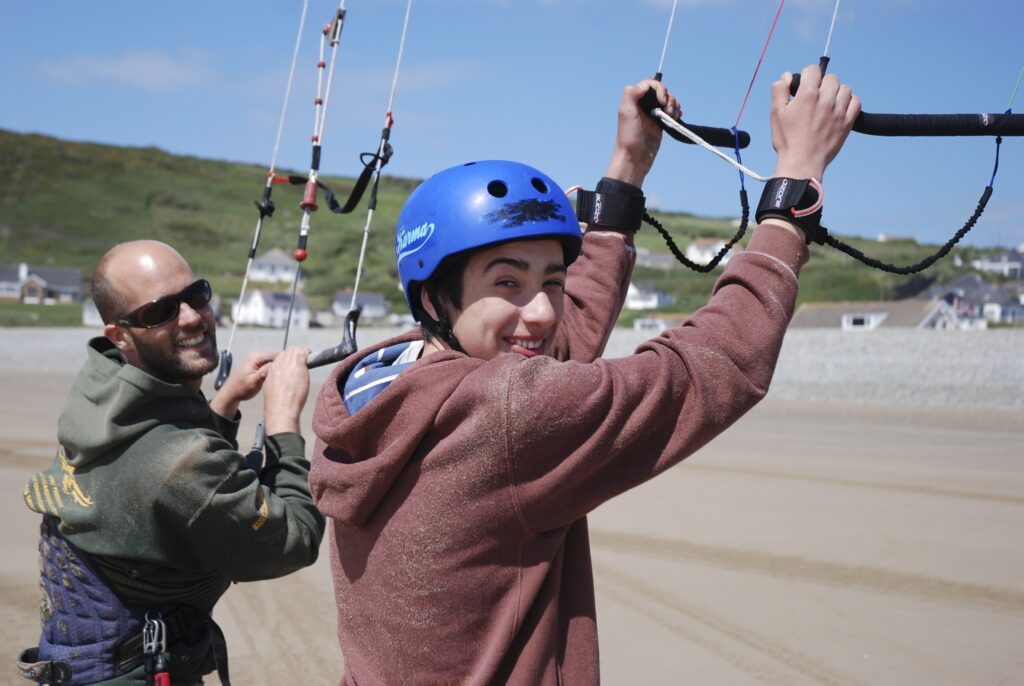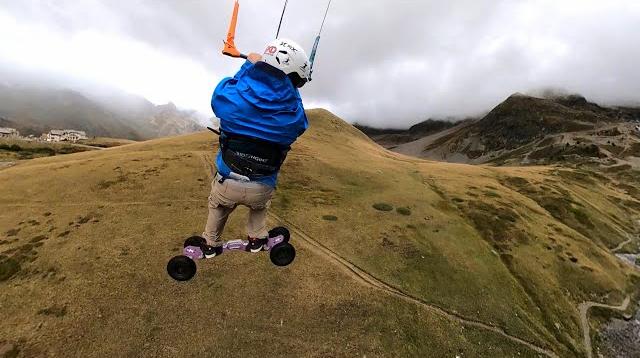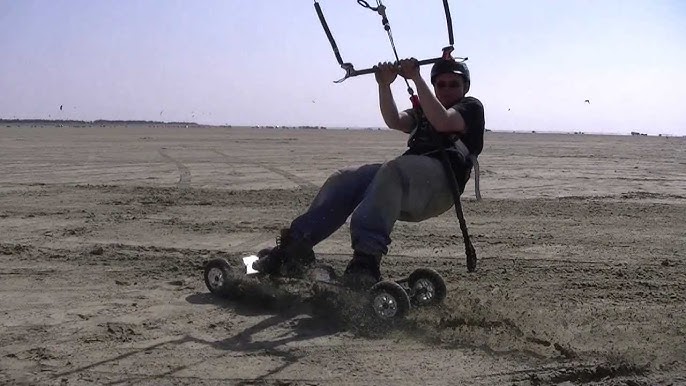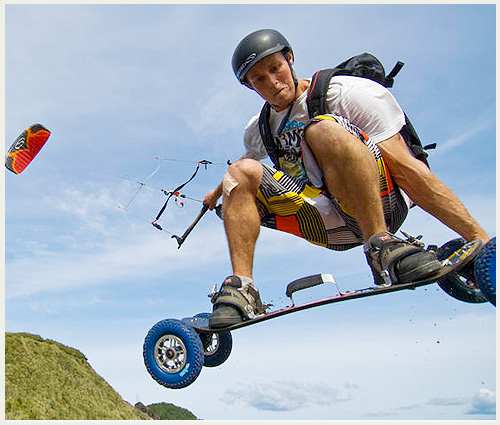Introduction
Kite landboarding, an exhilarating fusion of wind-powered kite flying and the thrill of wheels on land, offers an adventure like no other. Picture yourself gliding across a sandy beach or a grassy field, harnessed to a powerful kite, the wind at your back, and your heart racing with excitement. If this sounds like your kind of thrill, you’re in the right place. In this guide, we’ll delve into the exciting world of kite landboarding, from its inception to mastering the basics and exploring terrains you never thought possible.
Summary
- Getting Started with Kite Landboarding
- Learning the Ropes: Kite Control and Riding Skills
- Exploring Different Landboarding Terrains
- Going Beyond the Basics: Tricks and Freestyle Riding
- Community and Events: Joining the Kite Landboarding Culture
- Conclusion
Getting Started with Kite Landboarding
Understanding the Basics
Kite landboarding, often simply called landboarding, is a thrilling sport that combines elements of kite flying and skateboarding or mountainboarding. It allows riders to use the power of the wind to propel themselves across various terrains. The sport originated from the idea of harnessing the wind’s energy to ride on land, making it accessible to those who crave adventure beyond the waves.
Before you get started, it’s crucial to understand the fundamental aspects of kite landboarding:
Equipment Essentials: To embark on your kite landboarding journey, you’ll need some essential gear. This includes a landboard (similar to a skateboard but designed for off-road use), a power kite, control lines, and safety equipment such as a helmet and protective pads.
Safety First: Safety is paramount, especially for beginners. Familiarize yourself with the safety gear and always wear it while landboarding. Learn the basics of controlling the kite to avoid accidents and injuries.
Learning the Ropes: Kite Control and Riding Skills

Mastering Kite Control
One of the most critical skills in kite landboarding is mastering kite control. Proper control of the kite is essential for a safe and enjoyable ride. Here are some key aspects of kite control:
- Launching: Learn how to launch your kite safely. It involves laying out your kite lines, setting up the kite, and using the wind to get it airborne.
- Steering: Understanding how to steer the kite is crucial. You’ll use the kite’s control bar to direct it left or right, which, in turn, affects your direction on the landboard.
- Landing: Safely landing the kite is as important as launching it. You’ll need to bring it back to the ground without crashing or causing damage.
- Reading the Wind: Becoming proficient at reading the wind conditions is key. Knowing wind direction and speed helps you adjust your kite control for a smoother ride.
- Balance and Posture: Maintaining balance on the landboard while controlling the kite is an art. You’ll learn how to distribute your weight and maintain a comfortable riding posture.
Exploring Different Landboarding Terrains
Diverse Terrains for Adventure
One of the exciting aspects of kite landboarding is its versatility when it comes to terrains. Whether you prefer the soft sands of a beach, the open expanses of a grassy field, or the challenges of a desert, kite landboarding offers it all. Each terrain presents unique experiences and challenges:
- Beaches: The smooth, flat surfaces of sandy beaches are perfect for beginners. The soft landing provides added safety.
- Grassy Fields: Open fields offer more space to explore and practice advanced maneuvers. They are ideal for honing your skills.
- Deserts: For the ultimate adventure, consider landboarding in desert dunes. It’s a challenging terrain that offers unmatched thrills.
Choosing the right terrain for your skill level and preferences is essential for an enjoyable experience.

Going Beyond the Basics: Tricks and Freestyle Riding
Freestyle and Advanced Techniques
Once you’ve mastered the basics of kite landboarding, you can dive into the world of freestyle riding. This advanced level of riding involves performing tricks, jumps, and aerial maneuvers. Here’s a glimpse of what you can explore:
- Basic Tricks: Start with fundamental tricks like jumps and spins. Learning these moves will add a new dimension to your landboarding experience.
- Aerial Maneuvers: As you gain confidence, you can attempt more advanced tricks like kite loops, board-offs, and handle passes.
- Resources for Advancement: Numerous online resources, tutorials, and communities exist to help you advance your skills. Joining local clubs and practicing with experienced riders can significantly accelerate your progression.
Community and Events: Joining the Culture
Image: Images of kite landboarding gatherings, events, and communities.
Connecting with Fellow Enthusiasts
Kite landboarding isn’t just a sport; it’s a vibrant and welcoming community of enthusiasts. Whether you’re a beginner or an experienced rider, joining this community can enhance your experience in several ways:
- Sense of Community: Kite landboarders share a common passion. Joining local clubs or online forums allows you to connect with like-minded individuals who can offer guidance and camaraderie.
- Events and Competitions: Throughout the year, various kite landboarding events and competitions take place worldwide. Participating in these events not only provides an opportunity to showcase your skills but also fosters a sense of belonging within the community.
Conclusion
In conclusion, kite landboarding offers an extraordinary blend of adrenaline and adventure. From its inception to mastering the basics, exploring diverse terrains, and advancing to freestyle riding, this sport has something to offer every enthusiast. Safety, continuous learning, and respect for the environment should always be at the forefront of your kite landboarding journey. So, harness the wind, grab your landboard, and embark on the exciting adventure of kite landboarding!


